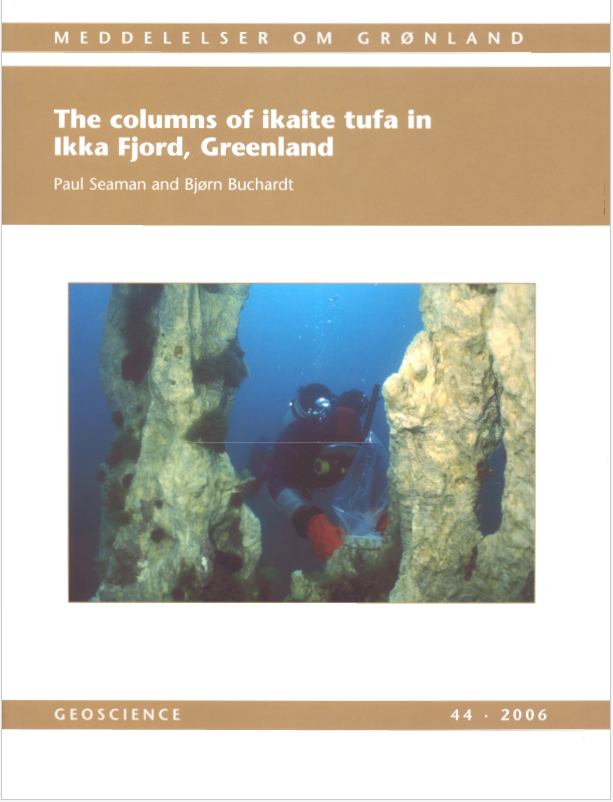The columns of ikaite tufa in Ikka Fjord, Greenland
DOI:
https://doi.org/10.7146/moggeosci.v44i.140293Abstract
In Ikka Fjord in Southwest Greenland, tufaceous material is found associated with ikaite (calcium carbonate hexahydrate) over alkaline submarine springs. Ikaite tufa forms where mixing of alkaline spring water and cold seawater leads to supersaturation and instant precipitation. The submarine springs are fed by meteoric water that was percolated through a carbonatite cored, alkaline ring complex, known as the Grønnedal-Ika complex, belonging to the rift-related Proterozoic Gardar episode. The Ikka tufa structures grow into a variety of forms, predominantly columns known as Ikka columns, many up to 18 m high. Distribution and form of the tufa deposits and the submarine environment in Ikka Fjord have been mapped for the first time using echo-sounder traverses, lines of side-scan sonar imagery and seismic profiles from a ‘pinger’ sediment profiler. The maps show the extent of Ikka tufa development and distributional trends within the deposits. Hundreds of observations and photographs made by divers within the fjord, together with the maps, have enabled us to classify th etufas into five morphotypes: columns, fin-like structures, mounds, and hard grounds. Many of the tufas are arranged into lines and clusters. GIS analysis has revealed that the outcrop of the Grønnedal-Ika Complex, the proximity to stream mouths and bedrock exposures all control the distribution of the tufa deposits. Field observations have also shown that carbonatite dykes passing under the fjord are influencing Ikka column location. Where ikaite tufas form in abundance, maps of their distribution also indicate the pattern of submarine springs about the fjord bed.

Downloads
Published
How to Cite
Issue
Section
License
Coypyright by the authors and the Commision for Scientific Research in Greenland / Danish Polar Center. No parts of the publications may be reproduced in any form without the written permission by the copyright owners.

